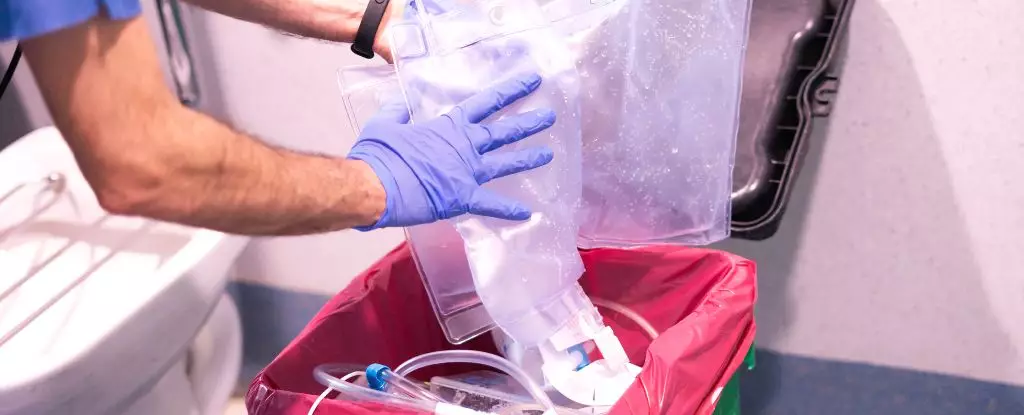In the 21st century, plastic pollution looms as one of the most pressing environmental dilemmas we face. The convenience and versatility of plastics have led to their ubiquitous presence in everyday life, but this has come at a great cost to our ecosystems. Landfills are overflowing, oceans are cluttered with microplastics, and wildlife is dying from ingesting discarded plastic residues. Traditional recycling methods have proven inadequate in addressing the escalating crisis, leaving a substantial gap in effective waste management and environmental rehabilitation. Through this lens, a pioneering approach has emerged: leveraging the capabilities of microorganisms to tackle plastic waste.
Microbial Potential: A Closer Examination
Recent breakthroughs in microbial research shed light on certain bacteria that possess the incredible ability to decompose plastic materials. Specifically, scientists have identified “plastic-eating” microbes that can break down several types of plastic, hinting at a potential for sustainable decay that could rejuvenate our cluttered landscapes. Notable bacteria, such as certain strains of *Pseudomonas aeruginosa*, have garnered attention for their plastic-degrading enzymes. While this prospect could signify a promising stride toward alleviating plastic waste, it is essential to navigate the complexities of deploying these microbes within various environments, especially those where they may not be so benign.
A New Concern: Hospital Pathogens and Plastic
The relationship between plastic-degrading microbes and human health raises alarming questions. In medical settings, plastics are essential for many treatments, from sutures to implants. However, if these plastic-eating bacteria infiltrate hospitals, they could pose significant risks. Our research scrutinized the genomic capabilities of hospital pathogens like *Pseudomonas aeruginosa*, which is notorious for its role in various infections and aligns with an alarming yearly death toll. It is this duality of functioning as both a potential environmental solution and a growing health threat that presents a paradox worth exploring.
Uncovering Plastic-Degrading Enzymes
Through computational analyses and laboratory tests, our team delved into the genome of *Pseudomonas aeruginosa* to explore its enzymatic potential against plastics. A particular strain isolated from a wound infection exhibited the remarkable ability to consume plastic for survival. This strain, producing the enzyme Pap1, showcased a distressing ability to use decomposed plastic not just as sustenance but as a growth catalyst, forming resilient biofilms that enhance pathogenicity. This adaptation reveals an insidious truth: bacteria can evolve to tolerate or thrive on waste we create, thus complicating the relationship we have with their deployment in environmental remediation.
Biofilms: The Evolutionary Advantage
Biofilms present a fascinating yet worrisome aspect of bacterial behavior. These complex communities can effectively shield their members from antibiotics and immune responses, making infections notoriously difficult to eradicate. Our experiments confirmed that *Pseudomonas aeruginosa* can incorporate degraded plastic into its biofilm matrix, serving as a unique structural component that reinforces its community’s resilience. This synergy not only exacerbates the infection dangers in clinical settings but also channels the evolutionary adaptability of bacteria into an arena that could further entrench them in human environments.
Future Implications for Medical Materials
Considering that many medical devices and treatments rely on plastics, the implications of using plastic-degrading pathogens are grave. The ability of *Pseudomonas aeruginosa* to consume these materials poses a compelling question: could the fungi used in our hospitals for life-saving procedures turn into our worst nightmare by accelerating device failures and complicating patient care? As we forge ahead in developing medical technologies, we must prioritize antimicrobial treatments for plastics and reassess material choices utilized in critical healthcare settings.
A Call for Cautious Innovation
The intersection of microbial ingenuity and human innovation carries profound implications for both waste management and medical technology. While the allure of harnessing nature’s mechanisms to mitigate plastic pollution is tantalizing, we must proceed with caution. A nuanced approach that weighs ecological benefits against health risks is paramount in ensuring that our efforts to combat one problem do not exacerbate another. As scientists continue to explore the fascinating world of microbes, we must embrace a holistic perspective that safeguards both the planet and human health in this ongoing endeavor.

